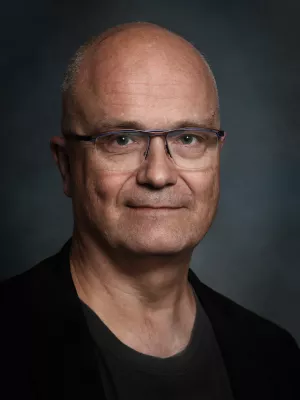
Hans Hellsten
Professor, prefekt/rektor

Ups and Downs, Violin Bowing as Gesture
Författare
Summary, in English
a) a factor in the interaction with the instrument
b) a factor in the interpretation of a composition
Two research questions further define these aims:
How can the body movement of a violinist inform a performative interpretation?
Can the qualities of mimetic gesture, dance, and poetry be assimilated into baroque violin bowing through an embodied interpretation of a musical score?
An embodied understanding of musical performance also gave rise to the analytical perspective of ‘Soundist’ and ‘Gesturist’ performance strategies, two poles which I employ in the process of interpretation-finding. The results of the video analysis are presented in ‘video essays’, which discuss these and other questions through the embodied knowledge of musicians in performance. The projects are divided into three video groups, each with a specific case study, a structure which reflects my attempt to distinguish and categorize the different kinaesthetic sources of violinists’ expressive movements through the fields of mimetic action, dance and poetic imagery.
The thesis takes advantage of the specific possibilities of the website format, integrating the video essays not just as complementary examples to the written text, but as a main means for argumentation, analysis, and discussion. The issues discussed in the video essays are further unpacked in texts with music examples, analyses of scores, comparative illustrations of body movements, and audio examples. Analytical texts, constructed in several layers, follow each video essay, progressing from practical observations to theoretical implications of each study.
The thesis eventually proposes that a full understanding of musical performance of scored music can be understood as ‘embodied interpretation’, through which the intricate relations between embodied experience and musical structure can be activated.
Avdelning/ar
- Lärare (Musikhögskolan)
Publiceringsår
2017
Språk
Engelska
Publikation/Tidskrift/Serie
Doctoral studies and research in fine and performing arts
Issue
17
Dokumenttyp
Doktorsavhandling
Förlag
Malmö Faculty of Fine and Performing Arts, Lund University
Ämne
- Music
Nyckelord
- musical gestures
- musical interpretation
- baroque music
- embodied music cognition
- historical performance practice
- Historically informed performance
- baroque dance
Status
Published
Handledare
- Stefan Östersjö
- Hans Hellsten
ISBN/ISSN/Övrigt
- ISSN: 1653-8617
- ISBN: 978-91-88409-11-9
Försvarsdatum
9 oktober 2017
Försvarstid
10:00
Försvarsplats
Red Room, Inter Arts Center, Bergsgatan 29, 214 22 Malmö
Opponent
- Richard Wistreich (Professor)